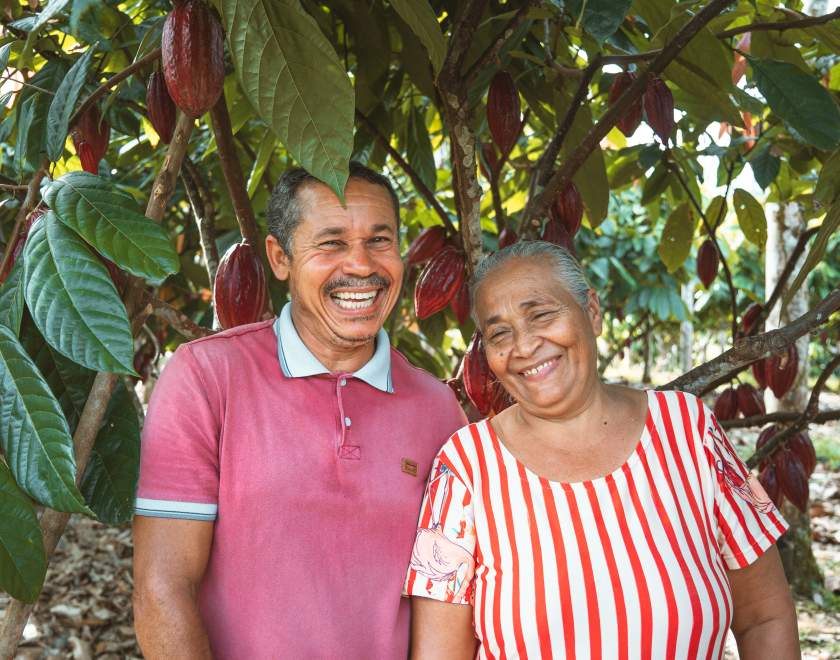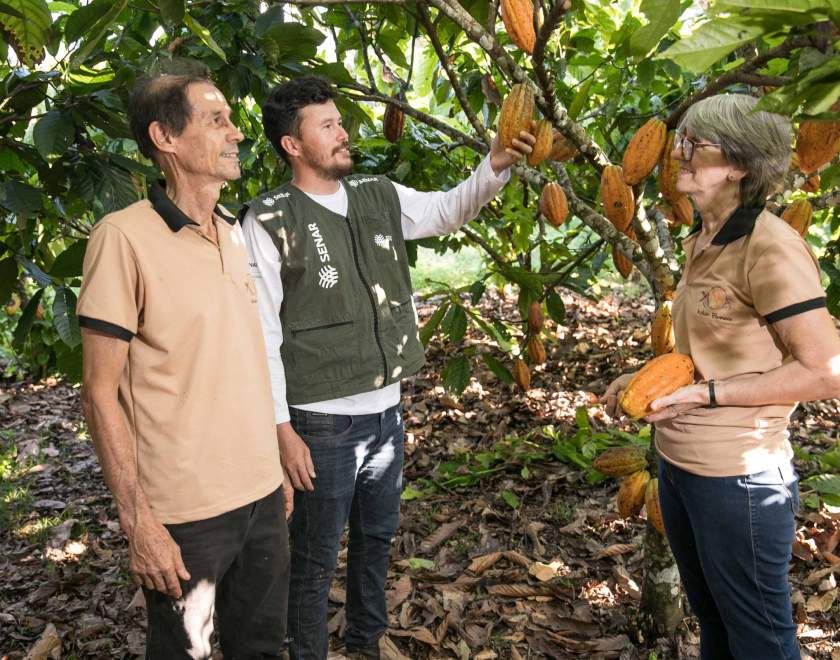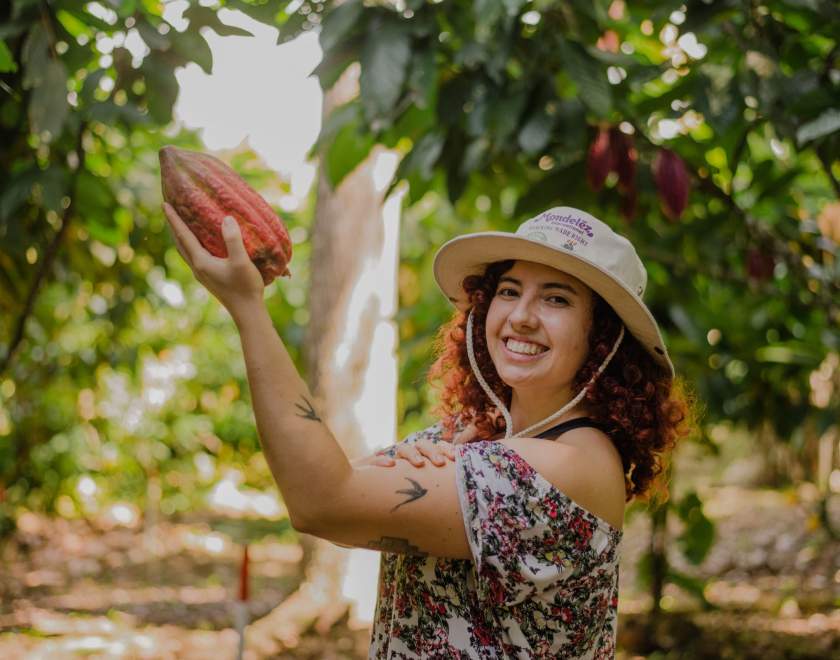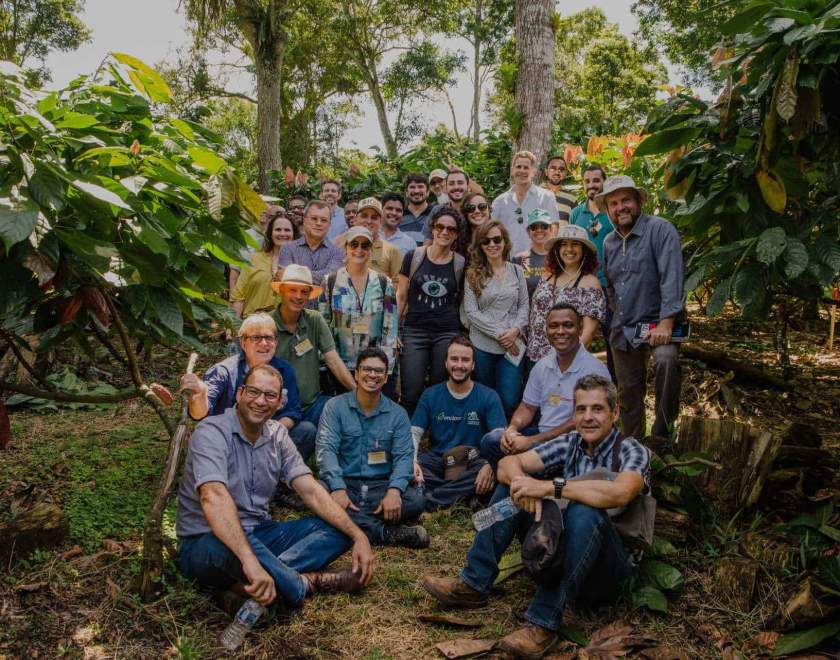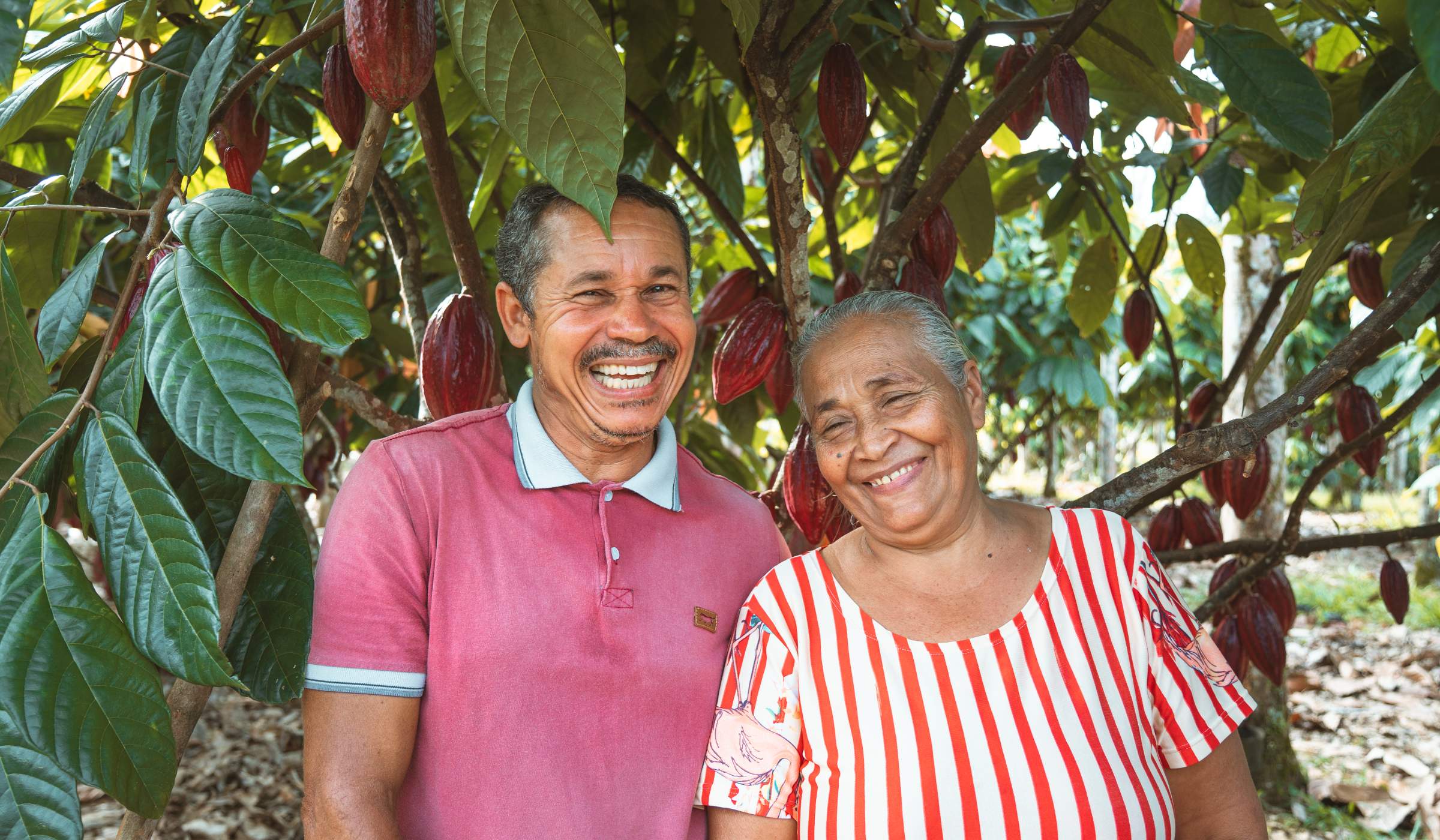
In the South American country, collaboration with a government consortium is allowing cocoa to blossom in Bahia.
CocoaAction Brasil is a pre-competitive, public-private initiative in Brazil’s vibrant and growing cocoa sector that convenes stakeholders, mobilises the value chain and creates collective action among government, companies and institutions for sustainable development. Working across all of Brazil’s cocoa-growing regions, it aims to raise cocoa productivity through the adoption of good agricultural practices, improve farmers’ incomes and promote positive labour relations among producers and workers. Additionally, the initiative promotes environmental preservation, restoration and conservation. In total, it helps create an enabling environment for cocoa to thrive as a business.
Pedro Ronca is the director for CocoaAction Brasil. We spoke with him after he visited cocoa farmers in the state of Bahia earlier this month alongside CocoaAction and World Cocoa Foundation (WCF) colleagues, as well as journalists. Together they saw first-hand the growing impact that partners are having. As WCF prepares to hold the next Partnership Meeting in Brazil, the conversation provides a glimpse of the setting in which the event will take place. The 2025 edition of the conference will be held in São Paulo, in March next year, under the theme “Our Future: Resilience Through Sustainability.
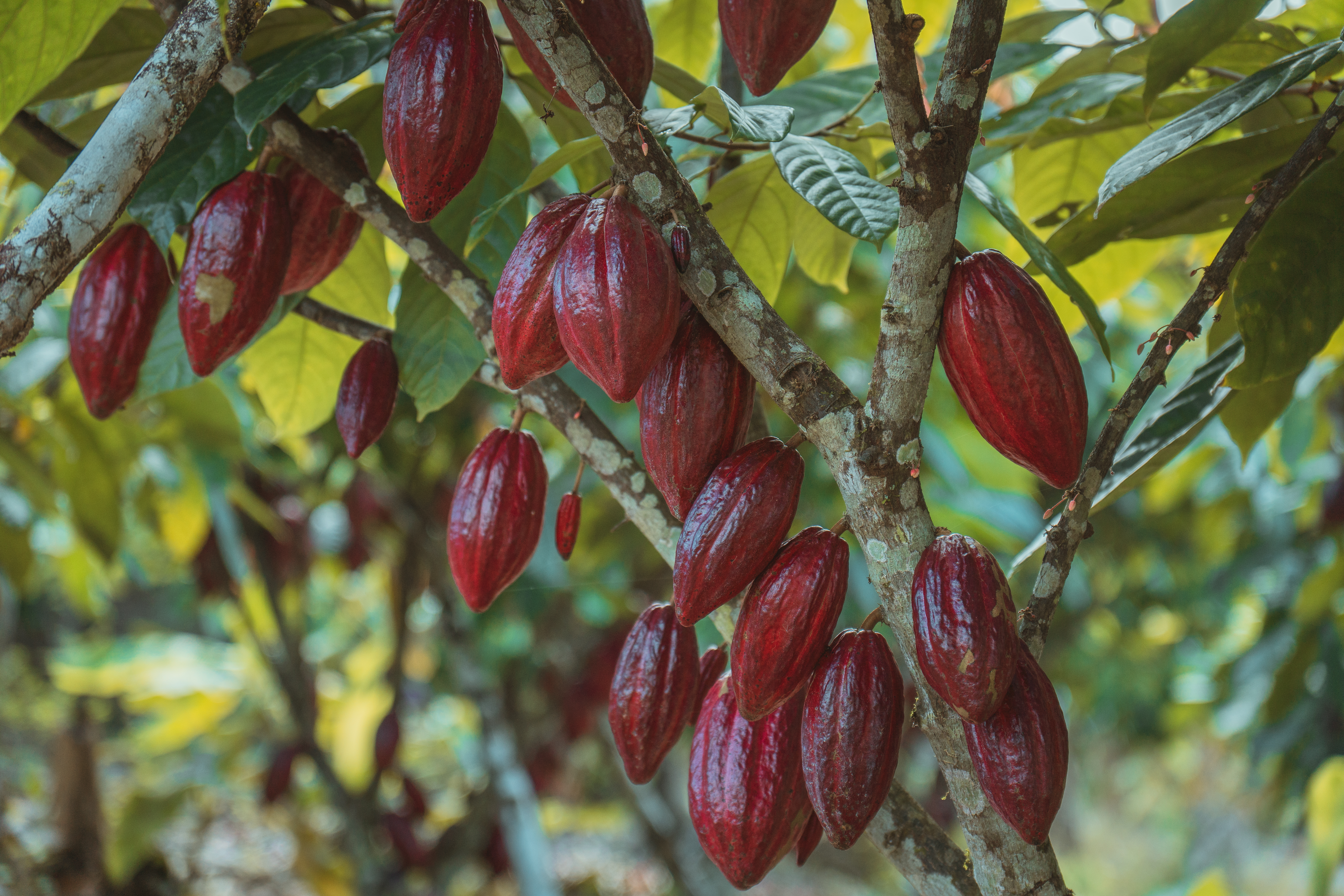
To start, what is different about cocoa production in Brazil compared to other major origin countries?
A unique feature of the Brazilian cocoa sector is that the entire chain is present in the country, from cocoa production to chocolate consumption. Brazil is the world’s seventh-largest cocoa producer as well as the fifth-largest chocolate consuming country. The average Brazilian consumes around 4 kilograms of chocolate per year. Even with 200,000 tons of production annually, the country still consumes more than it produces. The government’s goal is to double this production by 2030.
Cocoa is mostly grown in Brazil by smallholders and family farmers in Bahia, Pará, Rondonia and Espírito Santo. Other states have also started to invest in cocoa production such as São Paulo, Tocantis and Mato Grosso. The average size of the Brazilian cocoa farmer is 6.5 hectares, somewhat larger than in other countries, which brings some economies of scale.
Brazil is also an agricultural powerhouse. And it has advanced social and environmental legislation. There is available land for increasing cocoa production without the need for deforestation. In fact, cocoa is a driver of reforestation when it is planted in agroforestry systems to recover pasture lands. There is credit available with good interest rates for cocoa farmers. There is a mature business environment with a free market and no government interference. All of this bodes well for the cocoa sector here.
What are some of the valuable ways that CocoaAction Brasil is partnering with government stakeholders?
Among other partnerships, we work closely with Cacau+, a programme organised by CIAPRA (a consortium of municipalities in the Southern Territory of Bahia) that works to improve income among smallholders, as well as cocoa productivity, quality and sustainability through continued and qualified technical assistance. Cacau+ currently reaches 2,400 cocoa families (10% of the family farmers in Bahia’s Southern Territory) who farm a total of 6,000 hectares of land dedicated to cocoa production.
The programme is professionally run by a dedicated team and funded mostly by the Bahia state and local government. It’s an excellent business case of productivity increase and income growth for small farmers. Farmers’ average cocoa yield when they start the programme is 340 kilograms per hectare (kg/ha). This increases to 640 kg/ha at the end of the second year, with the goal of reaching 1,200 kg/ha by the end of the four-year cycle. This generates significant improvements in family income, leading to well-being and prosperity of cocoa producers and their families.
CocoaAction supports Cacau+ through funding, mobilisation of partners, institutional support and engagement and broad communication of the programme’s learnings and impact.
What impressed you most during your field trip this month to meet with cocoa farmers in Cacau+?
The smallholder farmers we visited all made it clear how the project has completely changed their productivity and incomes. We saw five-hectare farmers with new cars at their houses, a combination of higher market prices and their own productivity increases. We met one farmer of four hectares who never went to university and has started to study agronomy at 46 years old – a “youngster’s dream” in his words – now that he has a better income and can afford it.
What's next on the horizon for Cacau+ and CocoaAction Brasil?
Cacau+ plans to expand to reach 5,000 farmers and increase results for social development and income generation. The aim is that all families involved in the project are each able to reach an annual income of US$ 12,000. Many already have. Besides that, Cacau+ is working and close to approving a project to support the implementation of 10,000 new hectares of cocoa agroforestry.
Meanwhile, CocoaAction Brasil has several goals for the coming years as we work across Brazil supporting sustainable development through cocoa. We seek to support the sector in providing qualified technical assistance to 30,000 farmers and increasing credit accessed to US$ 50 million in cocoa via the Inova Cacau 2030. We also coordinate the Cacau 2030 Project, which has activities related to capacity building of farmers and technicians, knowledge transfer and technical assistance, cooperative organization, access to credit, and promotion of decent work to drive sustainability at the field level.
And we are working on other partnerships, which we hope to share more about soon. So stay tuned!
